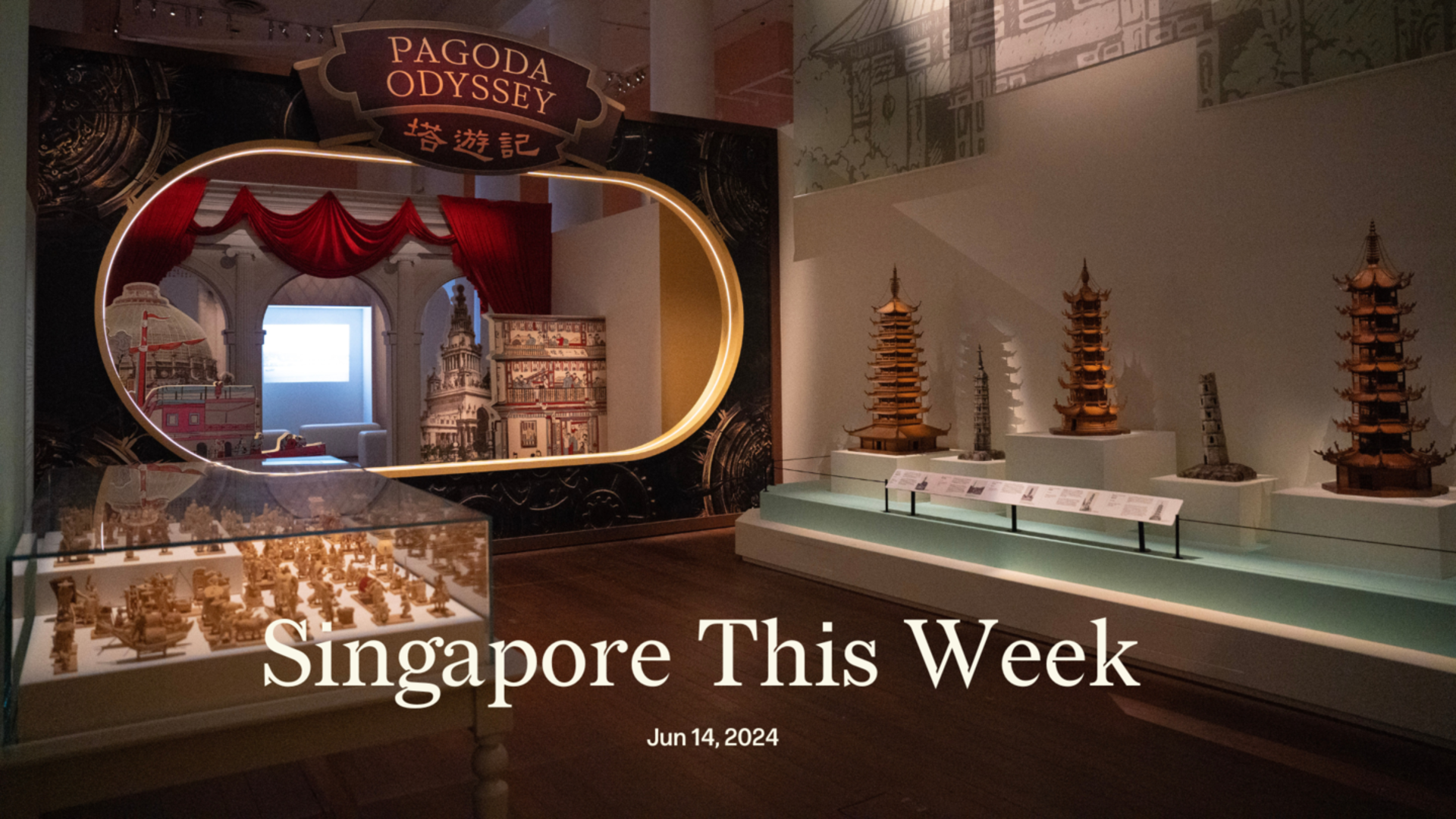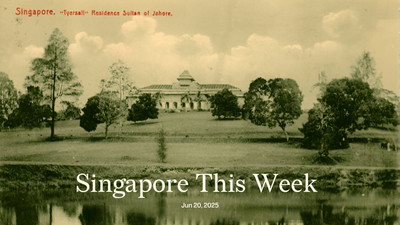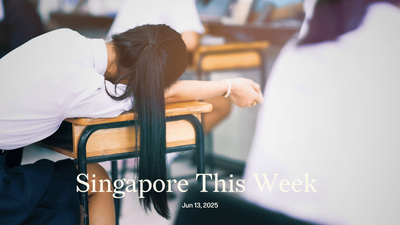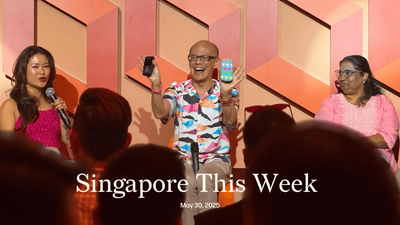Politics: Hashtag refresh
The ruling People’s Action Party (PAP) believes it needs to communicate better with Singaporeans, and has promised to engage more widely. This was the overriding message at the end of a six-month effort to refresh and strengthen the party, which, in a single page, was alternately branded as #refresh, #refreshPAP, and #refreshedPAP. A key plank of this new communication strategy seems to be hashtag permutations.
Greater engagement will occur, the PAP said, through its government parliamentary committees; by growing its “Friends of the PAP” network; through more regular press conferences; and “through digital channels to amplify its outreach”. Simon Khung and other approved content creators appeared jubilant at the Refresh bash at Marina Bay Sands. The PAP will also create new mental health and climate action groups, to be led, respectively, by Janil Puthucheary and Koh Poh Koon, senior ministers of state. The PAP may consider this to be a form of deep engagement, but the reality is that it has chosen two areas that, while important, are relatively safe and with broad consensus across party lines. More glaring are the omissions—a new group on housing affordability, for instance, or immigration and population policies, would have drawn a greater diversity of opinions from ordinary Singaporeans.
But maybe that’s not what the PAP is after. Optimists might laud the continued efforts of Lawrence Wong, prime minister, to further his Forward SG agenda. Cynics might sneer that it’s all just a rehash of previous attempts at collaborative policymaking—including 2012’s Our Singapore Conversation and 2019’s Singapore Together—which ultimately seemed to function more as outlets for the disaffected rather than genuine attempts at citizen co-creation. If Wong is genuine about his desire to be consultative and “relook everything”, then he’ll have to listen to radical ideas and be open to fundamental, not cosmetic, changes. Meanwhile, the PAP again asserted that it’s a “broad-tent party for all Singaporeans”. Perhaps it’s more accurate, as we’ve alluded to before and below, for the PAP to call itself a broad-tent party for all Singaporeans—who are straight, uncritical, married and obedient. Hashtag sumo.
Some further reading: in “One person’s quest to save Dover Forest”, we discuss the challenges Singaporeans have faced in public engagement and consultation exercises.
Society: Blame the unmarried
The Straits Times (ST) appeared to be caught this week between its political masters’ conservative agendas and the honest journalism we know its young reporters want. In “Rising share of singles is one main reason for Singapore’s great baby drought: Report”, ST appeared to blame single women for Singapore’s well-documented fertility crisis—“a misguided and sexist narrative”, according to the Association of Women for Action and Research (AWARE). AWARE criticised both the article and the Department of Statistics study it cited. Other pertinent factors, AWARE said, include the high cost of living and raising kids, domestic work burdens, long-term environmental concerns, and personal and professional opportunity costs. AWARE argued that Singaporean society must broaden acceptance of non-traditional parenting—“Can we finally throw out the concept of illegitimacy?”—and also support those who choose to remain child-free. ST’s X (formerly known as Twitter) account first had a headline that directly blamed single women, only to later change it to all singles, while forgetting to update a thumbnail, thus leaving the gendered original intact—a sequence of comical events captured by one intrepid user, @pukimarx. (“Pukimak” is a common Malay slang that combines the words for vagina and mother. Poor Karl.)
Some further reading: in “Reframing our traditional family unit”, we examine Singapore’s history of burdening women with national procreation responsibilities.
Society: Majority of Singaporeans surveyed in favour of legalising same-sex unions and adoption
The traditional nuclear family narrative was propagated further by ST through a headline in another article, “Many Singaporeans on the fence about LGBTQ issues, Ipsos survey finds”. Respondents may have dithered over some issues—such as public displays of affection—but in terms of the primary gay rights issues of the day, the findings were unequivocal. Some 54 percent of Singaporeans surveyed agree that same-sex couples should be able to get married or have legal recognition, and 57 percent agree that they should be able to adopt. Instead of burying these findings in paragraph 19, ST could have led with them, and a more accurate headline. No matter. We’ll make an editorial exception this week, and forgo our usual pithy blurb headline for the one ST should have used.
Society: Follow our norms, stay in your dorms
Migrant workers continue to blight our paradise. ST’s latest investigation has revealed instances of an individual passed out on the road, others eating and drinking on roads and yet others—you’ll scarcely believe this—jaywalking. We’re shaking our heads too. Like a stray thread in an exquisitely tailored suit or a drooping leaf on a gracefully manicured tree, these malcontents are the irksome obstacles in our tryst with perfection.
In a three-week investigation, ST visited “six locations from...Kranji to Tuas”, and it found a worker sleeping on the road. Dangerous? Yes. Unprecedented elsewhere? No and No. As for jaywalking: if only we had a dollar for every time a white-collar worker scuttled across Shenton Way after a sidelong glance. The only real problem appeared to be a few groups of workers having food and beer on a two-lane dead-end next to the grounds of the Sungei Tengah Lodge Megadorm. This is a migrant worker housing facility that can house 25,000 and does not allow alcohol consumption on its premises.
One resident, Vijay, told ST that the dorm’s heat and crowds force him out onto the road. Dipa Swaminathan, founder of the welfare group ItsRainingRaincoats, added that in the absence of any nearby places where they can consume alcohol, workers are left with little choice. And yet, these quotes sat beside a construction services firm chief’s profound insight about workers being reckless when drunk. And worse, “[i]n their home countries, this attitude may be a norm.” Meanwhile, Singapore Road Safety Council chairman Bernard Tay suggested that workers coming from rural areas in other countries are not aware of the traffic norms in the city. Even if that were true, surely just a single week being lugged around in open lorries here would have habituated them? Maybe ST was indeed coming from a place of solicitude. But reportage that paints in such broad strokes, and attributes to class and nationality behaviours that can be explained by human nature, harms more than it helps. Language, and framing, matters in building a society that is welcoming of migrants, as our new prime minister wants.
Society: Gutted
First it was The Online Citizen (TOC) and Kenneth Jeyaretnam, opposition politician. Now it’s the turn of Gutzy Asia, spawned from TOC, and also run by Terry Xu. This week, the government named its website and social media pages as “Declared Online Locations” under the notorious Protection from Online Falsehoods and Manipulation Act (POFMA). DOLs can continue operating but cannot derive financial benefits from the sites. Gutzy’s declaration will be in force till June 11th 2026.
In its announcement, the government mentioned “at least three different false statements of fact in Singapore, which are the subject of three active POFMA Correction Directions.” In October 2023, Gutzy said that a woman who had fallen from a building and died was a Filipino maid or worker when in fact she was Singaporean. On February 13th 2024, Gutzy republished the same falsehoods from Leong Mun Wai of the Progress Singapore Party that would ultimately dent his political career. A few days later, it was ensnared in the latest round of alleged falsehoods by Jeyaretnam relating to the Ridout Road saga.
Whatever the rights and wrongs of Gutzy’s journalism in those cases, Xu has more broadly over the years done an admirable job of reporting on issues that the mainstream media won’t cover. Hopefully he, now based in Taiwan, can find a way to continue this good work, particularly ahead of a crucial general election.
Some further reading: in “POFMA fail: the end of our journey”, we analyse the potentially harmful effects of POFMA on journalism here.
Earth: Plastic, not so fantastic
These days, we’re all a little plastic, microplastic. Commonly found in freshwater and marine environments, microplastics—particles smaller than 5mm—enter the food chain via air, water and soil systems. They also accumulate in processed drinks and food as packaging material degrades. Microplastics can be released into the air too (they’re even present in clouds) from the abrasion of plastic materials, and during the production of synthetic textiles. A new Cornell University study of 109 countries found that most of the world’s uptake of microplastics was recorded in South-east Asia. Rapid development in countries such as Indonesia, Malaysia and the Philippines went hand-in-hand with rising plastic use and pollution, leading to a six-fold increase in the microplastic human exposure level from 1990 to 2018. Inadequate methods of processing discarded plastics resulted in more than 30,000 tonnes annually of mismanaged waste run-offs, including from landfills and open dumping. Malaysians recorded the highest levels of microplastics consumption, eating (primarily through seafood) a daily average of 502.3mg per capita, the study said. They also breathed in the most microplastic particles a day per capita (about 494,000).
Although there’s insufficient data to fully understand the impact of microplastics on human health—research into its dangers is still in its infancy—the ubiquity of these pollutants in the environment should concern us all. According to the report, a recent investigation showed 50 percent more microplastics in the faeces of humans with inflammatory bowel disease compared to healthy individuals, thus highlighting “potential threats to public health.” The study’s authors have recommended that governments in industrialised countries encourage removing “free plastic debris from freshwater and saltwater environments through advanced water treatment and effective solid waste management practices.” Eradicating 90 percent of global aquatic plastic debris, the report said, can help decrease microplastic uptake by more than 48 percent in South-east Asian countries. In Singapore, about 900m kg of plastic waste is discarded every year. And while the government has gone some way to reduce plastic waste, minimise plastic debris from leaking into the environment, and even to remove microplastics from our water at desalination and Newater plants, there are various ways we can further cut our exposure to it. Start by drinking tap water instead of bottled; not heating anything in plastic containers; and asking yourself if you really need that bag of crisps before bed.
History weekly by Faris Joraimi
Multi-story models
In the darkness, rows of intricately carved wooden pagodas—many taller than a child—taper and rise under soft light. They seem transported right out of China’s fabled landscapes. But these 84 miniature models, built on a 1:50 scale, were part of the fledgling Republic of China’s showcase at the 1915 Panama-Pacific International Exposition in San Francisco, as a modern and progressive nation on par with the West. They’ve been brought together at the Asian Civilisations Museum (ACM) for the first time since then, on display until June 1st 2025. Constructed at the workshop of a Jesuit-run orphanage in Shanghai by 300 of its young residents, they represent the diversity of Chinese pagoda architecture across geography and time. After the exposition ended, the pagodas disappeared from public view, entering the collection of the Field Museum in Chicago and later into private hands, before being acquired by the ACM; as is often the case, it’s not entirely clear how and at what expense. The Panama-Pacific exposition was held mainly to celebrate the completion of the Panama Canal the year before, following years of US military and political intervention in what was then “New Granada” (Colombia and Panama).
The US fostered independence movements in the latter to create a new country that would support construction of the canal, which served the US’s interests as an imperial power dominating both the Atlantic and Pacific oceans. (A voyage from New York to San Francisco was reduced from six months to two weeks.) There’s a lot of unappetising politics in the background, but the story the ACM wants visitors to focus on is the “profound tale of artistic endeavour and cross-cultural exchange” to which these miniature pagodas attest, and the expo as a moment of “cultural exchange”. It’s hard to dismiss this remarkable project to systematically research and document an architectural tradition. Since they were made, some of the actual structures themselves were either destroyed, modified or heavily restored, making the models a valuable record of pagodas in the early 20th century. The ACM exhibition sees itself presenting the pagodas as they should have been, restoring the original narrative intended by their makers as an “educational resource”. Jumbled together in San Francisco by locals with no order, this exhibition instead groups the pagodas by chronology and region. The beautiful miniature models, existing between accuracy and creative reimagination, mirror the museum’s curatorial script blending history and myth.
Carl Trocki: 1940 - 2024
Late last month, Carl Trocki, an eminent American historian of the Malay world passed away at 84. Like other scholars of South-east Asia, Trocki first came to the region as part of the American Peace Corps, and like many of them, opposed the US’s campaign in Vietnam and took part in protests. Early in his scholarly career in the 1970s, history was still largely written from a European and colonial point of view. Trocki was among a cohort of historians who paid more attention to indigenous sources, but he was especially unflinching in criticising previous scholarship that didn’t take local historical figures seriously. His first book, Prince of Pirates (1979), remains among my favourite studies. It follows the changing fortunes of the Temenggungs—sea lords of the Johor sultanate—as the British East India Company established a foothold in the southern Straits of Melaka. Using neglected Malay sources in the Johor state archives, Trocki argued that the Malay maritime state was the basis for Singapore’s success as a money-making colonial port. Through their seizure of Johor-ruled Singapore in 1824, the British made use of the networks and institutions of the Malay maritime state to take over its functions and replace the Temenggungs as its rulers. Later on, Trocki delved further into Chinese secret societies and entrepreneurial networks—which had been an important component of the Temenggungs’ story—in Opium, Empire and the Global Political Economy (1999). In Singapore: Wealth, Power and Political Control (2006), Trocki drew a link between Singapore’s present economic prosperity and its colonial history of exploitation tied to British drug-trafficking. It’s no small feat to challenge received wisdoms and ideological assumptions, while also making rigorous contributions to historical research. Trocki did so, and with style. His prose, as Michael Barr wrote in his obituary, was “worthy of a master storyteller”.
Arts: Play your cards right
Singapore card and board game makers have been dealt a good hand. While live entertainment is still in post-pandemic recovery, the lockdown popularity boost for local table-top games hasn’t waned. Alvin Tan, owner of specialty board game cafe The Mind Cafe, estimates that there were about 120 locally made games as of last year, compared to about 15 a decade ago. Roll the dice and you’ll score several homegrown hits: “Makan Mania”, where players race to chope their tables and chow down on their favourite hawker eats; or “Rats 2 Riches”, a game of financial strategy where longkang rats try to beat the rat race by scheming, stealing from, or sabo-ing others. Others include “The Singaporean Dream”, “Durian Dash”, “Wok And Roll”, “Kopi King”, and “Chope! Respect The Tissue”. Anyone learning about Singapore solely through these decks and boards might initially assume—how preposterous!—that we’re only interested in competing for food or financial gain. Homegrown Origame estimated that sales increased about 30 percent year on year since they started the game company in 2019. Co-founder Nicholas Pang told ST that pandemic-era nostalgia for Singaporean food, drink, and communal spaces could have been a big contributing factor: “Things change very quickly in Singapore, buildings get upgraded or replaced. This desire to cling to aspects of the past is a way to cope with these incessant changes.”
This desire to connect has, thankfully, informed gameplay for the less competitively (and capitalistically) inclined. Other popular local card games include conversation-starters like Smol Tok, also created by Pang. He was inspired by Holocaust survivor Viktor Frankl’s autobiography, Man’s Search for Meaning, and aspires to create games as “social tools that drive conversations, curiosity, and change”. Kellynn Wee, anthropology PhD researcher, has also created the reparative and collaborative table-top role playing game (TTRPG) “Move Quietly & Tend Things”, which invites participants to inhabit different archetypes and worldbuild a speculative version of future South-east Asia. These relationship-building decks join the universe of other illustrious icebreakers such as “TableTopics” and “Where Should We Begin? A Game of Stories” (the latter created by Esther Perel, celebrity couples therapist). As election season approaches, it might also be worth drawing a card or two from our neighbours across the causeway—and their parody of Malaysian politics, POLITIKO. In this game of thrones, players can pick from 10 not-so-fictional political parties and rally their voters to the ballot box through backroom plotting. Game on, Singaporeans: it’s a quick upgrade from gamemaster to political mastermind.
Arts: Worship film goddesses at the altar of the DIVINE
Whether it’s Suzzanna, the “Queen of Indonesian Horror”, or Maggie Cheung, the queen of unrequited love and longing, now’s the time to glorify your film goddess of choice at a screen near you. DIVINE is the Asian Film Archive’s offering to the divas of the silver screen, 12 female-forward films curated in response to the ArtScience Museum’s blockbuster touring exhibition “Goddess: Brave. Bold. Beautiful”. The film non-profit understands that goddesses are complex creatures, and this lineup of restored classics and more recent favourites both leans into and critiques the binaries of gender and sexuality on the silver screen. Spectators may be familiar with the figure of the monstrous-feminine, coined by Barbara Creed to challenge the patriarchal view that the feminine is only portrayed as the “victim” in horror filmography. The film theorist invites us to instead consider how the female reproductive body might be the source of a monstrous power. This cinematic trope, at once emancipating and constraining, is remade through DIVINE’s slate of films from the Malay Archipelago. We may recognise the hair-raising cackle of the vengeful pontianak from Indonesian cult horror classics like “Sundelbolong” (1981). “But what happens when the pontianak goes silent?” asks Alicia Izharuddin, Malaysian film scholar. “Does she lose her transgressive power?” In Amanda Nell Eu’s short film “Lagi Senang Jaga Sekandang Lembut” (“It’s Easier to Raise Cattle”, 2017), the Malaysian writer-director’s teen spirit barely makes a sound. Instead, the short’s sonic landscape is filled with the sounds of nature—and the uncanny sounds of eating: “chewing, masticating, crunching on bone, human bones”. Far from losing her transgressive force, Eu’s ponti-protagonist regains it through a wave of feminist worldmaking that is rewriting the rules of horror.
It isn’t just body horror that occupies DIVINE’s programming: the horrors of war are soothed by rituals of divination and healing in Sai Naw Kham’s “Song Of Souls” (2023), which follows the beloved folk singer Nan Mya Han as she reflects on the loss of her son from the brutal and ongoing civil war that has riven Myanmar. Through her music, as well as interviews with other spiritual intermediaries—singers, fortune tellers, traditional tattooists—this haunting debut feature captures conflict and political tumult against the lush mountain ranges of Shan State. Nan Mya Han is an unexpected film luminary alongside the “Goddess” exhibition’s Michelle Yeoh, Marilyn Monroe and Zhang Ziyi. The Shan icon’s story reveals a deeper truth about goddesses: they don’t demand sacrifices; they make them.
Tech: Electrifying heavy duty vehicles
The Land Transport Authority (LTA) will conduct four battery swapping and mobile charging system trials for electric Heavy Goods Vehicles (e-HGVs), like prime movers and hauliers. These four-year trials, commencing in the latter half of 2024, aim to provide insights into the technical, operational, and safety aspects of new charging technologies. The effort involves PSA Corporation, Strides Frontiers (one of SMRT’s business arms) alongside companies like Power-Up tech and Beecharge Innovation Group that provide mobile charging services to passenger electric vehicles. This wide-ranging, strategic collaboration with various industry players could be the first step in meeting industry demands for efficient and adaptable charging infrastructure, especially for larger vehicles with longer charging times. The breakdown of heavy vehicles in Singapore is unclear. However, research from the US indicates that while they comprise only about 10 percent of all on-road transport there, heavy vehicles generate more than 25 percent of the total transportation sector emissions that contribute to global warming. If these trials show scalability and commercial viability, Singapore’s roads could become even cleaner in the coming years.
Tech: Singapore satellite pushes frontiers in space tech
Singapore’s lowest-orbiting satellite, the Extremely Low Earth Imaging Technology Explorer (Elite), will be launched in mid-2025. Built by Nanyang Technological University (NTU), Elite’s close orbit of just 250 km above Earth, offers unique benefits: improved telecommunications and the ability to monitor agricultural and mining activities, to name just two. However, operating at such a low altitude poses challenges of greater atmospheric drag and the presence of corrosive gases. NTU’s approach includes a novel engine designed to combat the former, while a nanotechnology coating will protect against the latter. Elite will also carry a locally developed high-resolution space camera. These developments underscore Singapore’s growing space tech prowess, and are indicative of the industry taking root here. Elite is a collaboration between NTU, Aliena, LightHaus Photonics, NUS Temasek Laboratories, and ST Engineering Satellite Systems. The Economic Development Board, which also has an Office for Space Technology and Industry driving the development of the country’s space ecosystem, recently shared that there are now more than 2,000 professionals working across 60 companies in the industry. As local companies continue to push frontiers in space innovation, Singapore could find itself playing an ancillary role in major-power “Star Wars”.
If you enjoy Jom’s work, do get a paid subscription today to support independent journalism in Singapore.








